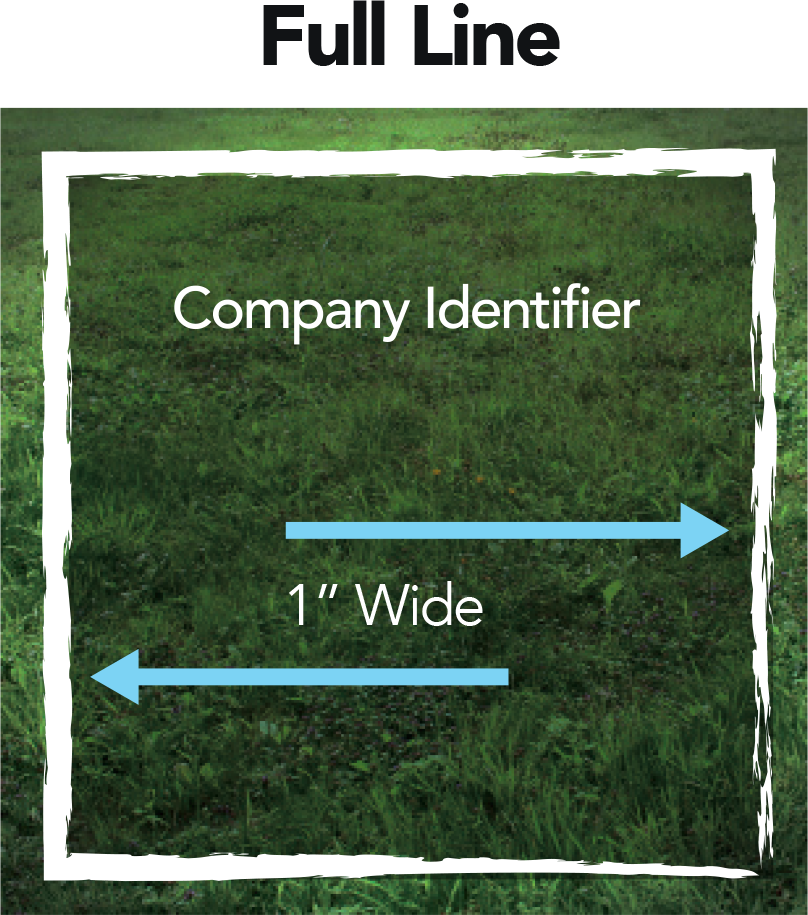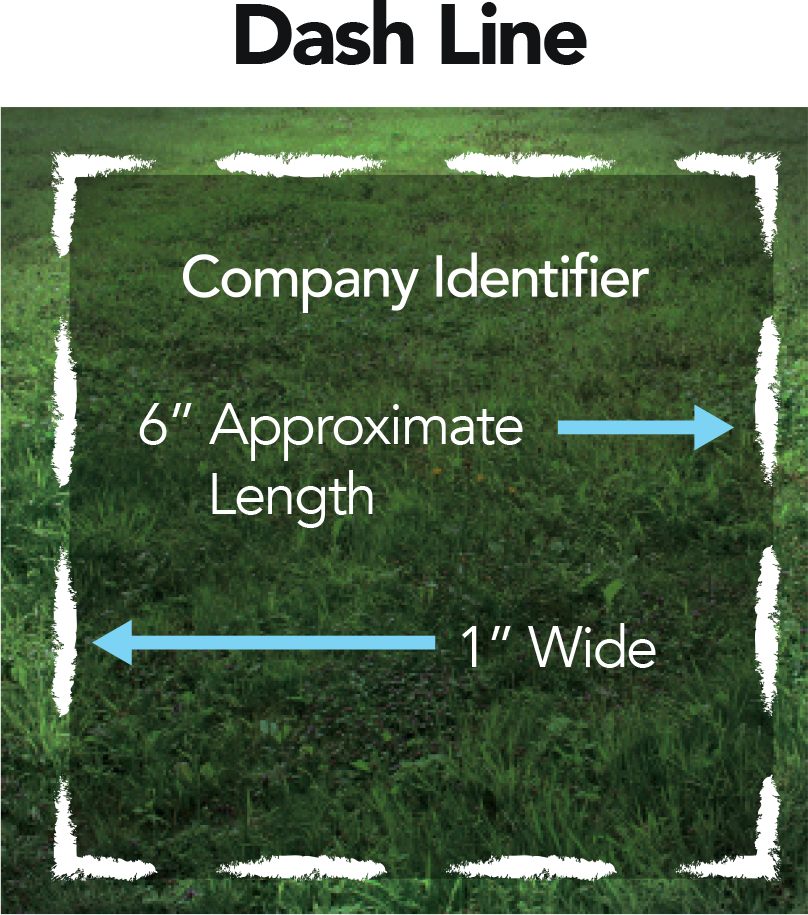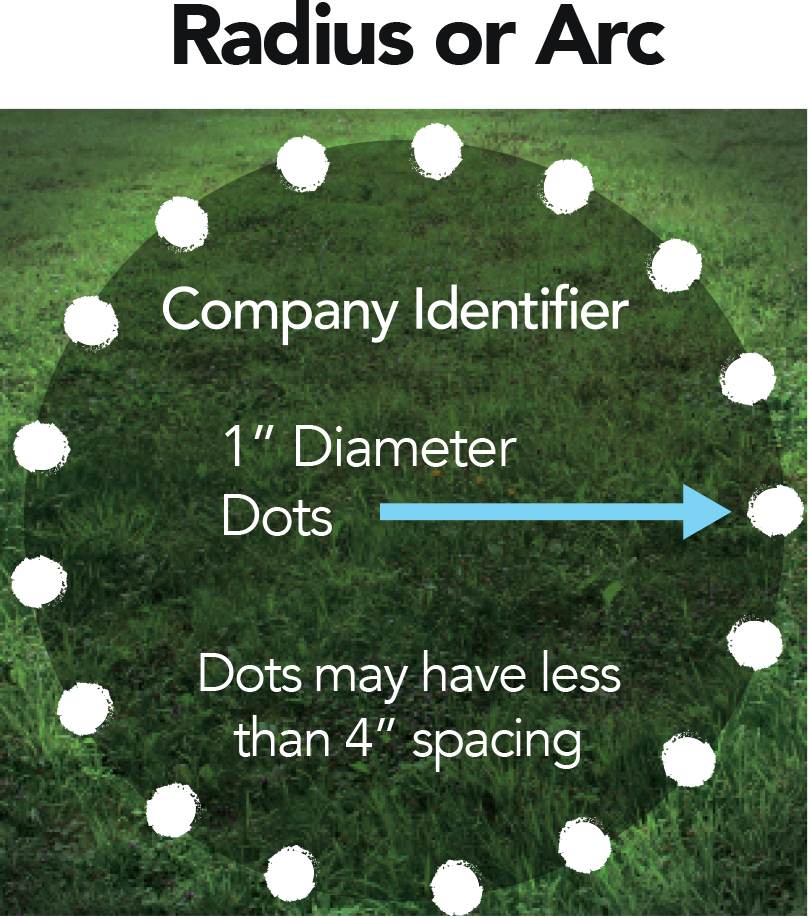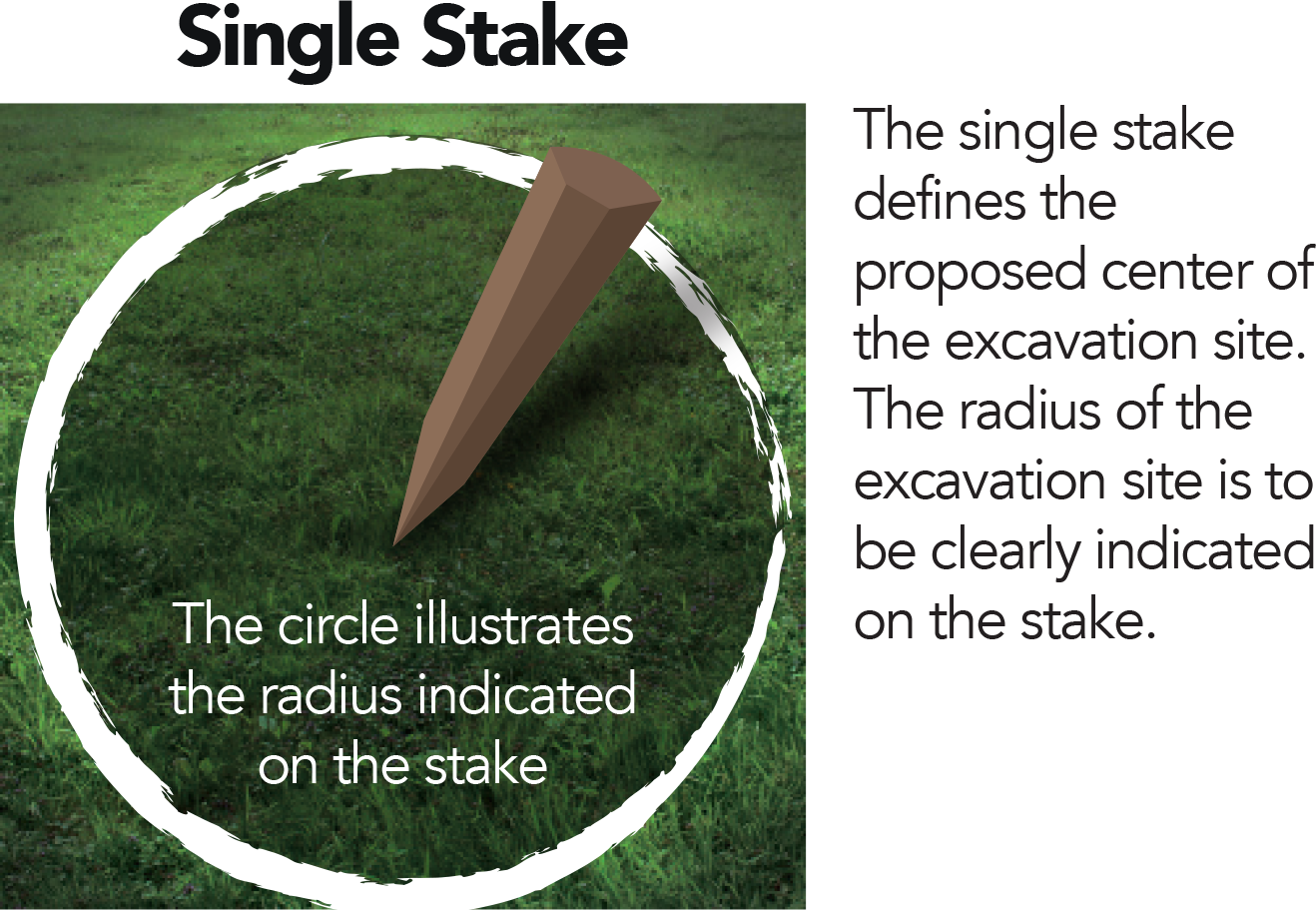One of the most important damage prevention practices occurs well before an excavation or utility locate. It happens even before a call to Gopher State One Call is made.
Pre-marking, also commonly known as white lining or white marking, is one of the five required “precautions to avoid damage” included in Minnesota’s dig law. Per State Statute Chapter 216D, using white markings for proposed excavations is required “except when it can be shown that it is not practical.”
Even though it is required by law, white lining is often overlooked by professional and homeowner excavators alike. But in addition to other pre-locate practices such as submitting precise marking instructions, it is an effective way for excavators to convey their exact intended excavation area. That communication in turn helps avoid confusion, delays and errors and allows locators to more quickly identify the area to locate.
How to white line your excavation site
White lining involves marking the area of excavation in white paint or white flags (or a combination of the two) to clearly designate the route and/or area of excavation prior to the arrival of utility locators.
There are several options for white lining the proposed excavation area. Any of these may be used depending on the terrain and features of the area. No matter which method is used, the excavation area should also be marked with a company identifier, which could be a printed white flag with identifying information and/or company information marked in white paint.
For marking polygonal excavation areas:
Full/continuous line: Mark a 1” wide continuous line around the entire excavation area.

Four corners: Mark the four corners of the project with 1” wide dashes. Each dash should be approximately 6” long.

Dash line: Mark the area with a 1” wide dashed line. Each dash should be approximately 6” long, and dashes should be at least 4” apart, but close enough together that they can easily be seen by locators.

For marking radius or arc excavation areas:
Dots: Define the arc or radius of the area with 1” diameter white dots at close intervals.

Single stake: If your excavation site has a radius of 50 ft. or less, you may opt to delineate it with a single stake positioned at the center of the proposed excavation area. The stake should be white and clearly marked with the excavation company’s identifier, as well the radius of the excavation site. This radius should also be communicated to Gopher State One Call when the locate ticket is filed.

GSOC recommends also including a safety buffer when white marking the excavation area.
What is the effect of white lining?
White lining doesn’t just help things run smoothly on the job site—it can help prevent damages. In addition to white lining being required in some states, like Minnesota, the Common Ground Alliance also recommends it as a best practice.
The CGA cites a 1997 National Transportation Safety Board safety study, Protecting Public Safety through Excavation Damage Prevention. The study, sponsored by the NTSB and the Federal Research and Special Programs Administration, was written based on a 1994 safety workshop of about 400 representatives from pipeline operators, excavators, trade associations and local, state and Federal government agencies that sought to identify and recommend ways to improve damage prevention programs.
Through the workshop, researchers found that pre-marking, or white lining, “allows the excavators to specifically tell facility owners where they intend to dig,” according to the study.
According to workshop participants, pre-marking an excavation site helps to ensure that owners of underground facilities are aware of the specific area that is to be excavated. Facility owners avoid unnecessary work locating underground facilities that are not associated with the planned excavation. Excavators can be certain that underground facilities within their intended area of excavation are well marked. Because pre-marking defines the physical boundary of the excavation site, it removes ambiguity about what underground facilities need to be located. Marking the intended excavation area creates a greater likelihood that affected underground facilities will be identified to the excavator. The Safety Board concludes that pre-marking an intended excavation site to specifically indicate the area where underground facilities need to be identified is a practice that helps prevent excavation damage.
Source: NTSB, Protecting Public Safety Through Excavation Damage Prevention, 1997, page 25.
White lining tips and reminders
- White mark before you submit a locate request. You will be asked when you submit your ticket (either by phone or online) whether you have white lined your excavation area. Please only submit a request once you have done so.
- Please note that locators will only locate the area identified in white—not an entire address identified on the ticket. This is why it’s important to plan ahead and precisely white mark before you contact GSOC.
- If you are using the center point stake method, note your radius when you submit a ticket to GSOC in addition to marking it clearly on the white stake.
- White markings can often be used to avoid the time and cost of a Meet ticket. Even if a Meet is ultimately necessary, the use of white markings is required so that there is a clear understanding of the work to be done in the field, and its precise location.
